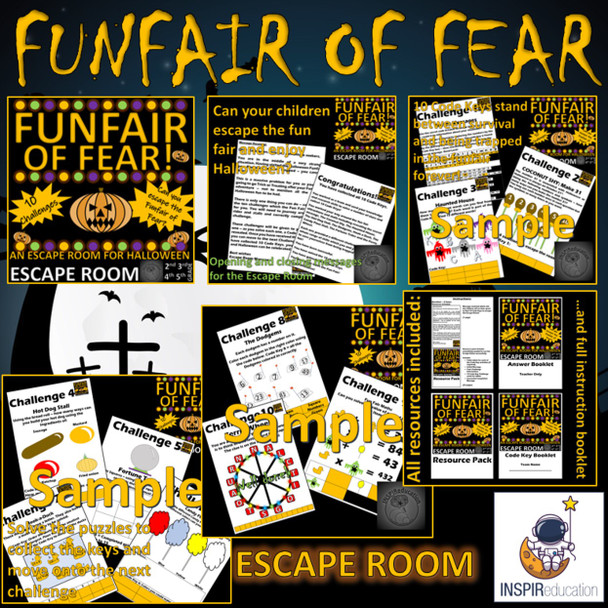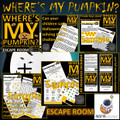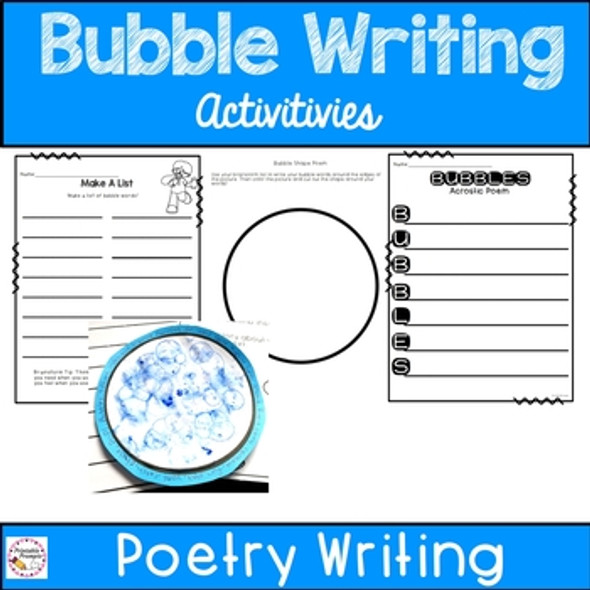Description
This bundle brings together our ever-popular Halloween resources to provide your students with a day of fun in the build up to Halloween. Including two Escape Rooms which focus on problem solving, team work, math skills, science knowledge and literacy skills as well as Party Planning Pack which puts the traditions of Halloween from around the world at the fore of the party. Your students will learn about traditions whilst travelling the world, sampling activities, crafting, tasting and smelling the traditions of Halloween.
Escape Room 1: Where's My Pumpkin?
Using an Escape Room to develop curriculum knowledge is an exciting activity that will inspire learners from 3rd Grade to 6th Grade.
The curriculum content of this Escape Room is linked to:
- Halloween
- Problem Solving in math and language
- Green Plants and their Life Cycles and Growing Conditions (Science)
The aim of the Escape Room is to provide jeopardy for the children to work under pressure to solve 9 clues to save them being trapped in the Escape Room.
Before beginning, you will need to prepare the following included within this product:
- A copy of the Pupil Workbook for each group
- A set of table activities for every group – prepared beforehand and given to each group after they have all completed each Code Key activity
- IT sources and research materials (for the Science link if required)
- Initial Starting Script sharing the problem to the children
- Completion Script celebrating the completion of the challenge
Children do not need prior knowledge of the topic above to complete this Escape Room, as the research will support the answers and each Code Key is supported with several clues. This Escape Room is ideal as a review of learning.
The activity begins by the teacher reader the Initial Message received. It clearly tells the children that they need to solve each challenge within the Escape Room to collect the Code Key to move onto the next challenge. Only when they complete the challenge can they move on. All of the Pumpkins have gone missing - meaning that without Pumpkins, Halloween and - more importantly- Trick or Treat will be cancelled. The job of the Escape Room teams is to save Halloween!
What follows are 9 activities which focus on the traditions of Halloween and the science elements of Green Plants.
The 9 activities are based on the following outcomes:
- Math Problem Solving – finding 5 ways to make 13 using limited digits and operations
- Solving a secret message using a Coded Alphabet
- Anagrams
- Word Search
- Linking Pumpkins to a delivery address – follow the trail
- Parts of a plant
- Lifecycle of a plant
- Conditions required for plants to grow
- Visual Math Problem Solving (algebra)
When all 9 activities are completed, and the children have gained the correct Code Keys from each activity, the teacher can read the final communication detailing how the children have been successful and can therefore leave the Escape Room. You can see each activity in the preview.
Setting up the Escape Room
1. Children should be split into groups of no more than four and be placed in their own work space. Work spaces can be labelled from Challenge 1 to Challenge 9 using the labels in the Resource Pack. Each of the 9 activities can then be placed on those work spaces.
2. Access to IT and research materials should be provided to allow children to research answers to questions if they need them and review their own knowledge, as well as checking answers - this is only required for the science activities.
3. Each group should have a Code Key Booklet and decide on a team name
4. Read the Initial Message to the children to set the challenge in context. Discuss what this means, and what the activity entails. Children will be told that all the Pumpkins have gone missing, and if they are not found – Halloween and Trick or Treat will be cancelled. Only they can save Halloween!
5. Each group starts on one of the 9 tables with one of the 9 Challenges. Determine a time limit with your children – during that time, the children must try and complete the challenge to reveal a Code Key. All answers can be found in the Teacher Answer Booklet.
6. At the end of the time, children should have filled in the Code Key in their booklet. At this point, the groups move to the next Challenge sequentially. For example, if they were working on Challenge 5, they would then move to Challenge 6, then 7, 8, 9, 1 and so on until all 9 were completed.
7. The same time limit should be applied to all Challenges to ensure it is fair for all groups. Some Challenges will be faster than others!
8. For those groups who have been successful, they are then able to read the completed statement where they find out if they have escaped the Escape Room and saved Halloween!
The Escape Room should last for 2 hours.
We hope that your children enjoy this Escape Room.
ESCAPE ROOM 2: Funfair of Fear
Using an Escape Room to develop curriculum knowledge is an exciting activity that will inspire learners from 2nd Grade to 5th Grade. This Halloween product includes everything you need to run the Escape Room - just print and go and have fun!
The curriculum content of this Escape Room is linked to:
- Halloween
- Problem Solving
- Math and Language skills
The aim of the Escape Room is to provide jeopardy for the children to work under pressure to solve 10 clues to save them being trapped in the Fun Fair Escape Room.
Before beginning, you will need to prepare the following from the resources included:
- A copy of the Pupil Workbook for each group
- A set of table activities for every group – prepared beforehand and given to each group after they have all completed each Code Key activity
- Initial Starting Script sharing the problem to the children
- Completion Script celebrating the completion of the challenge
Children do not need prior knowledge of the topic above to complete this Escape Room, as the research will support the answers and each Code Key is supported with several clues. This Escape Room is ideal as a celebration of Halloween and Fun Fair traditions.
The activity begins by the teacher reader the Initial Message received. It clearly tells the children that they are trapped within a Halloween Fun Fair and need to solve each challenge within the Escape Room to collect the Code Key to move onto the next challenge. Only when they complete the challenge can they move on and finally escape the Fun Fair.
What follows are 10 activities which focus on specific fun fair features.
The 10 activities are based on the following outcomes:
- Solving a secret message using a Coded Alphabet
- Coconut Shy: Math Problem Solving – finding ways to make 31 using limited digits and operations
- Haunted House: Making 12 words from limited letters
- Hot Dog Stall: Sequencing Ingredients in different ways
- Fortune Teller: Magic Squares
- Candy Floss Stall: Making colors
- Hook a Duck: Sequencing numbers from math problems
- The Dodgems: Properties of numbers (prime, squared and even numbers)
- Fun Fair Math: Problem solving algebra
- Ferris Wheel: Word Problems
When all 10 activities are completed, and the children have gained the correct Code Keys from each activity, the teacher can read the final communication detailing how the children have been successful and can therefore leave the Escape Room.
The Escape Room should last for at least 2 hours.
We hope that your children enjoy this Escape Room.
Halloween Traditions from Around the World: Plan your own Halloween Party to learn and experience a range of traditions
Host your own Halloween Party with your students where they can learn all about where our Halloween traditions come from whilst at the same time, creating, tasting, playing and smelling Halloween in their own classrooms!
We have devised the product to use with our own students in order to build on their excitement for this very exciting season. We have used a number of well-known traditions to create a party pack where your students can learn where they came from, how they developed over years and to also have a go at creating, playing, tasting and smelling Halloween. The aim was to ensure that our students knew why we have and do the things we do at Halloween time, often bringing the learning back to the variations of how cultures believe their dead ancestors can be guided back to their families for one night only.
The product includes the following resources:
- Full instructions and resource list to support the activities
- PowerPoint introduction to the activity for the students
- World chart for each student to have to record where in the world they have visited
- 11 Fact Cards - sharing traditions, their countries of origin and how the tradition developed and a suggested activity which links with the tradition.
The resource can be used in one of two ways with your students:
- As a whole class looking at the 11 traditions one at a time or,
- As 11 stations set up and the students move around at their own speed and using their own choices of where they want to go and what they want to learn about (this is the far more exciting choice for students to engage in!)
The 11 traditions and their countries of origin are:
- Lighted Lamp (Austria)
- Jack O' Lanterns (Ireland)
- Lanterns (China)
- Costumes (France)
- Skeletons (Mexico 1)
- Incense Burning and Monarch Butterflies (Mexico 2)
- Trick or treating (USA 1)
- Black Cat (UK 1)
- Bobbing for apples (UK 2)
- Bats and Spiders (Medieval English folklore)
- Witches (USA 2)
As the students move to each activity and learn about the origins of the tradition using the information cards, a linked activity has been created to encourage them to experience Halloween traditions. Timings are up to the teacher, and can last an afternoon easily. Students, upon completion, mark their travels on a world map which each student has at the start of the activity - this is included within the resources of the product, and reminds them of where they have been.
A resource list has been created with ideas as to how the children can make/taste/play/smell the 11 traditions. Most are inexpensive and ideas for how to make the most of resources have been included in the instruction booklet.
Activities include:
- Painting clay lamp pots and adding a tea light into it (Austria)
- Carving pumpkins (Ireland)
- Making and decorating paper lanterns (China)
- Putting a range of costumes together with face paints and trying to create as many Halloween "characters" as possible (France)
- Using a range of cut out cardboard bones, skulls and vertebrae, create different weird and wonderful creatures (Mexico)
- Burn a range of incense sticks to smell the different scents whilst coloring in outlines on Monarch Butterflies (Aztecs - Mexico)
- Card Game developed with Trick or Treat challenges (USA)
- Turning a black cat cut out into a brightly colored animal (UK)
- Bobbing for apples (UK)
- Toffee apples - tasting them and prizes for apple bobbing and treats for the Trick and Treat challenge, as well as the bets tasting witches potions (UK)
- Color and paint bats and spiders to make them appear not so scary using luminous pens
- Create witches potions using a wide range of soft drinks, sodas and other juices. The best tasting potions win a toffee apple (USA Witches)
Our students loved this product, and it was an exciting afternoon of activities in the build up to the Halloween celebrations. We hope that your students love it too!
Best wishes
INSPIReducation


















